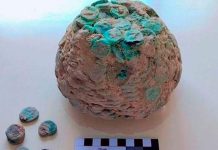Chemiluminescent immunoassay, also known as CLIA, is a method used to find certain antibodies in a sample. It is an alternative to the popular enzyme-linked immunosorbent assay, commonly known as ELISA. Both the CLIA kit and ELISA kit don’t require the use of radioactivity, which was used in the past to detect analytes.
CLIA kits are praised for their accuracy and ease of use. Below you will find exactly how the CLIA method works and what benefits it provides.
For further information and where to get CLIA kits, visit https://www.mybiosource.com/clia-kits.
How Does The CLIA Method Work?
By utilizing a chemical reaction to determine the antibodies, the CLIA method creates a light emission that can be used to label the antibody. This test has the sensitivity of chemiluminescence with the accuracy of immunoreaction.
This light emission is created when the electrons transition between an excited state and a ground state. The use of a reaction means there is very little background radiation involved. This means that the results are absolute, rather than relative.
The method is good for quantifying low concentrations of analytes and detecting enzyme immunoassay (EIA). It can find these low concentrations in small samples as well as large ones.
When compared to other assays, the CLIA method is very specific with what antibodies it can detect. The CLIA method is even able to detect different isotypes.
Markers
The CLIA method uses enzyme markers to create the reaction. These can be direct or indirect markers.
The direct markers are usually luminophore markers like acridinium and ruthenium esters. Whereas indirect markers are usually enzyme markers like alkaline phosphatase and horseradish peroxidase.
To get a more stable result, rather than luminophore markers, synthesized molecules would be used instead. These molecules include AMPPD and isoluminant base molecule derivatives.
What Are The Benefits Of The CLIA Method?
The CLIA method utilizes chemical reactions instead of chromogens and isotopic detection. This allows for less wait time (only takes about 30-40 minutes), no stopping solutions, and no need for an external light source.
CLIA kits require little equipment and few steps so they are user-friendly. When compared to the ELISA kit, you only need a small sample size to get accurate results.
Enhancers can also be used with the chemical reaction so it lasts longer. The chemical reaction in CLIA kits is an emitted light, so enhancers can make them brighter as well as long-lasting. Some common enhancers are ferrocyanide and metallic ions.
What Are The Disadvantages Of The CLIA Method?
The main disadvantage to this method is its high cost. Due to its high range, CLIA kits are generally more expensive than other assay kits. The CLIA method also has limited Ag detection.
When compared to the analyte concentration, the CLIA method can give relatively non-linear plots of responses due to the signals in the flow systems.
Standardization
Due to its high sensitivity, wide range, and accuracy, the CLIA method has become a standard way to automate antibody testing.
It utilized highly advanced software to analyze the results of the test and compare them to control groups. Automating the process gives a controlled analysis of common and specific antibodies and can provide a level of security that is on par with clinical laboratories.
How Is It Used?
The CLIA method has been used across multiple industries, from environmental monitoring to food safety testing for lead and harmful bacteria.
One of the most common uses of the CLIA method is to rapidly and accurately diagnose autoimmune diseases. Some diseases that can be detected are rheumatoid arthritis, coeliac disease, and systemic sclerosis. This is extremely beneficial as the antibodies can appear years before a diagnosis.
In 2020, the CLIA method was used to help create a vaccination for the COVID-19 virus. The detection of antibodies in symptomatic and asymptomatic people led to the understanding of how the body’s immune system responded. Later, the CLIA method was used to test the effectiveness of the vaccine against the virus.







